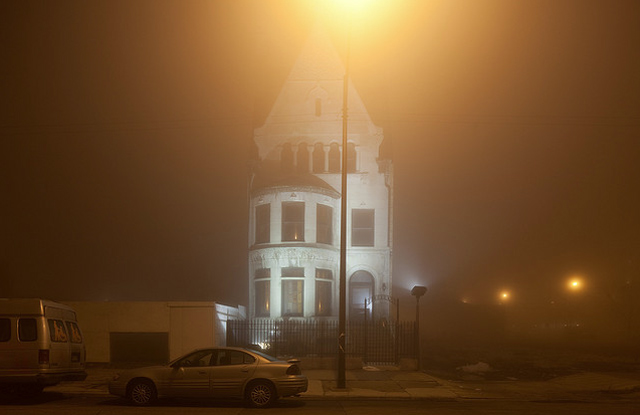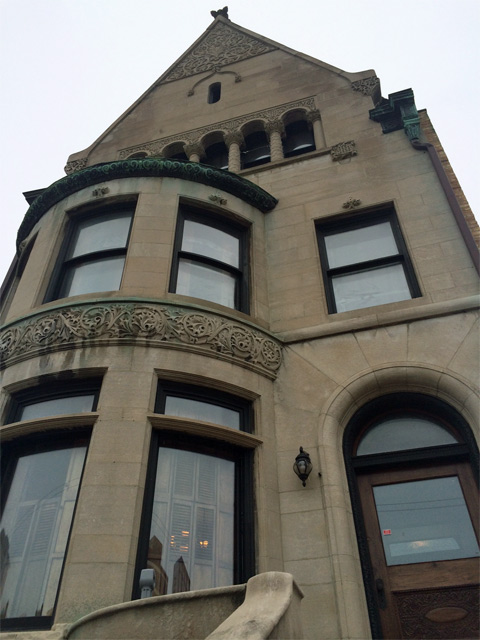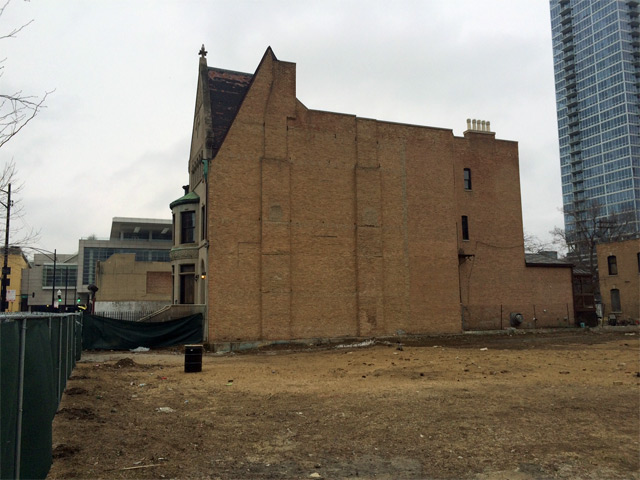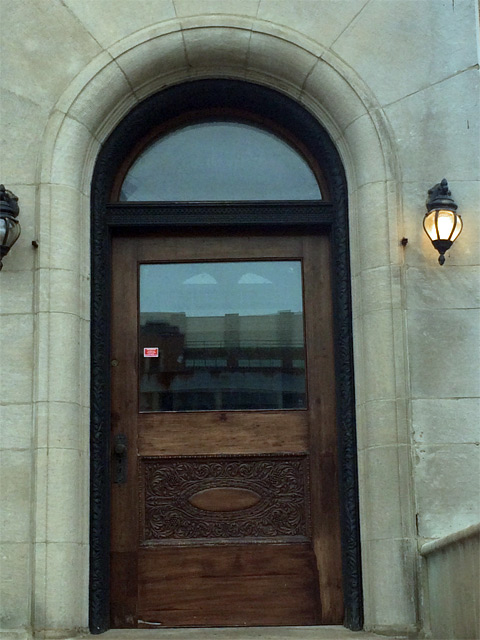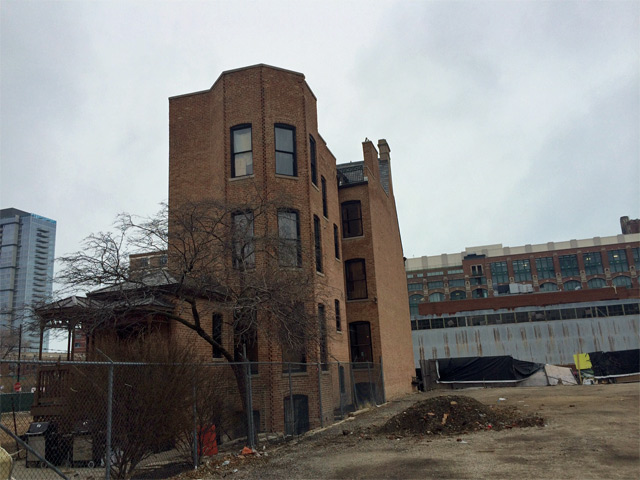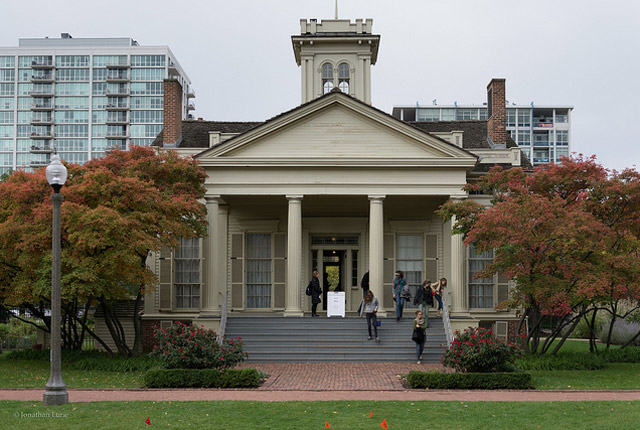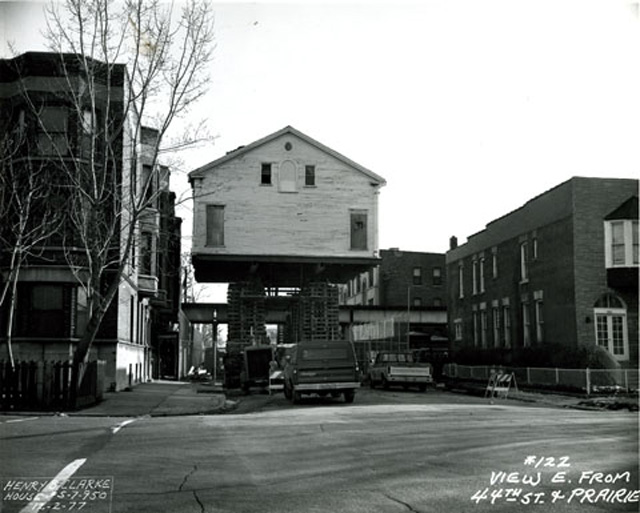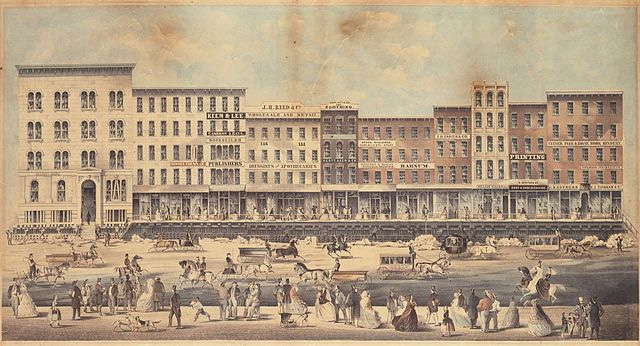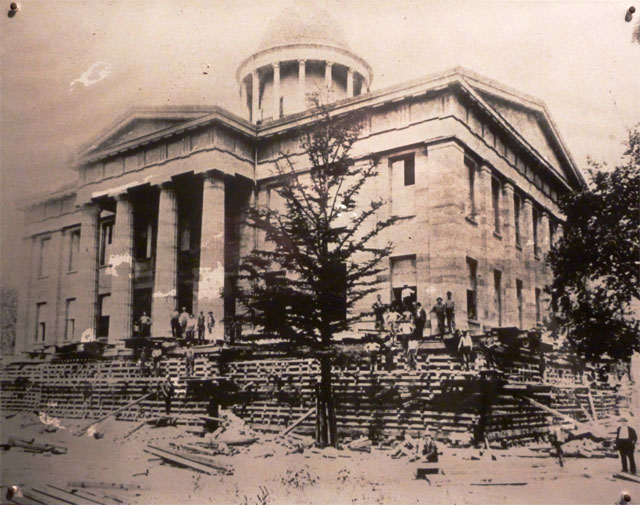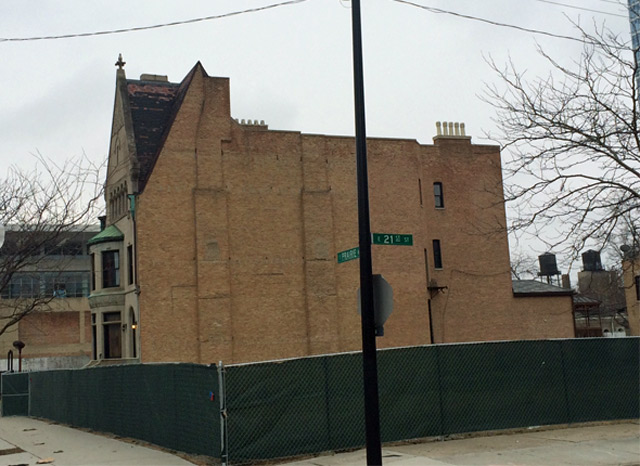Mansion On Wheels: Harriet F. Rees House May Soon Have New Address
By JoshMogerman in News on Mar 30, 2014 3:30PM
David Schalliol’s “Isolated Buildings” (nicely encapsulated by Chicago Magazine’s Whet Moser) is a tour of the city’s most forsaken structures. Buildings alone in the block on which they stand.
One prominent building that avoided Schalliol’s treatment has the 2100 block of South Prairie Street all to itself. That omission may be OK or even intentional, because the Harriet F. Rees House may be getting a new address—and neighbors—if the city has its way. A plan to uproot and move the mansion might sound amazing, but we have a glorious history of jacking up and rolling out buildings round these parts. Let's dig in, shall we?
In 1899, the Old State Capitol was shifted upwards in Springfield to add another ground floor.
But that’s nothing compared to what we did here in Chicago during the 1850’s and 1860’s when a big chunk of the city was lifted to deal with flooding issues which had ushered in cholera epidemics that killed off 6% of the City’s population.
Before reversing the Chicago River, raising a half block of Lake Street all at once (totaling 35,000+ tons!) with jackscrews was this town’s world-awing engineering fete.
Chicago’s oldest house, the Henry Clarke mansion has been lifted and moved twice; shifting from Michigan Avenue between 16th and 17th Streets all the way down to 45th Street in Hyde Park, before retuning to the South Loop in its current location at 1827 S. Indiana in the late 1970s. The harrowing second move included shifting the building over 'L' tracks on hydraulic lifts that froze, leaving the building elevated for two weeks.
Three blocks north of the Clarke House, the Harriet F. Rees House sits on an otherwise empty block of Prairie.
Once built snugly into the affluent streetscape of elite homes on this town’s tony-est avenue, the handsome Romanesque Revival façade is now on its own in the shadow of the growing McCormick Place campus. And it is that growth which will be adding another chapter to Chicago’s rich history of jacked up buildings. The DePaul basketball arena is coming, so the Rees house has to go.
In the past, that would have meant demolition. But Chicago has (hopefully) learned from its shameful building busting past—not to mention that the Rees House is on the National Register of Historic Places. So, as the City goes to court to seize the property, a plan to move the building has been hatched instead.
If the City is successful in court, Chicagoans will be treated to the spectacle of seeing the three-story masonry building lifted from the ground on hydraulic lifts, slid onto a giant trailer and ever-so-slowly towed to its new location.
These days, the historic preservation community prefers to leave buildings where they were “born” because the context is often an important part of their significance. The Rees House has been on the National Register since 2007 at 2110 S. Prairie. In October of 2013, it was placed on the National Register again, but placed at what will be its new address at 2017 S. Prairie, where it will help tell the story of a key part of the City’s history near the Clarke and Glessner Houses (both Prairie District museums), enlivening what was once a neighborhood of riches and adding another chapter to our engineering legacy.
A lonely house on Prairie no more.
BTW, the house seems to be in great shape:
And, while the Clarke House move sounds like a crazy urban legend, here's proof that it really happened:
Clarke House Move from Chicago magazine on Vimeo.

